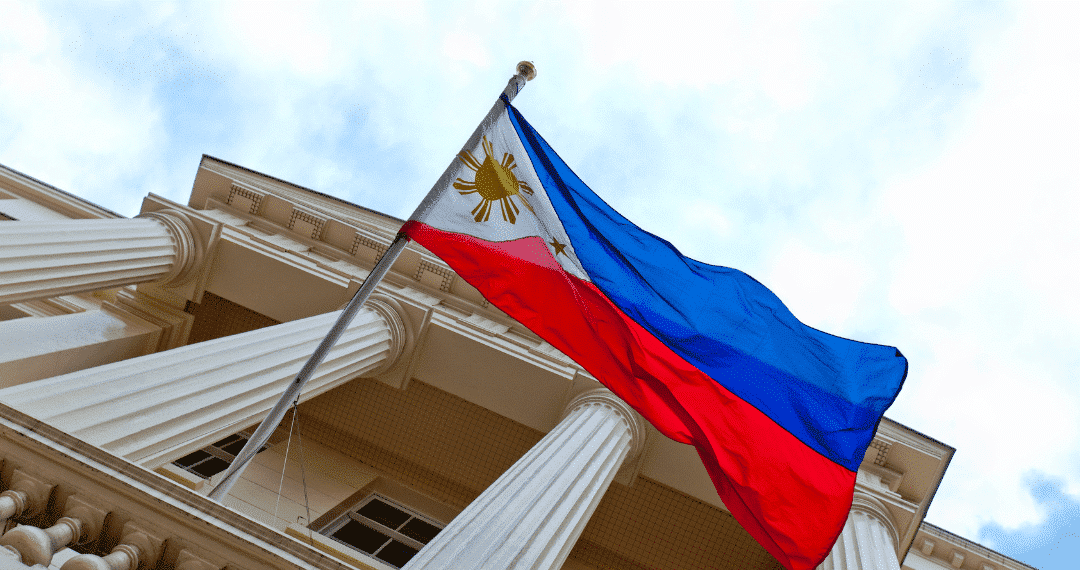Ever wondered what are the most spoken languages of the Philippines? This archipelagic country in Southeast Asia consists of 7641 islands with a population of 110.8 million people. The Philippines is a place where different religions, cultures, and languages exist side-by-side.
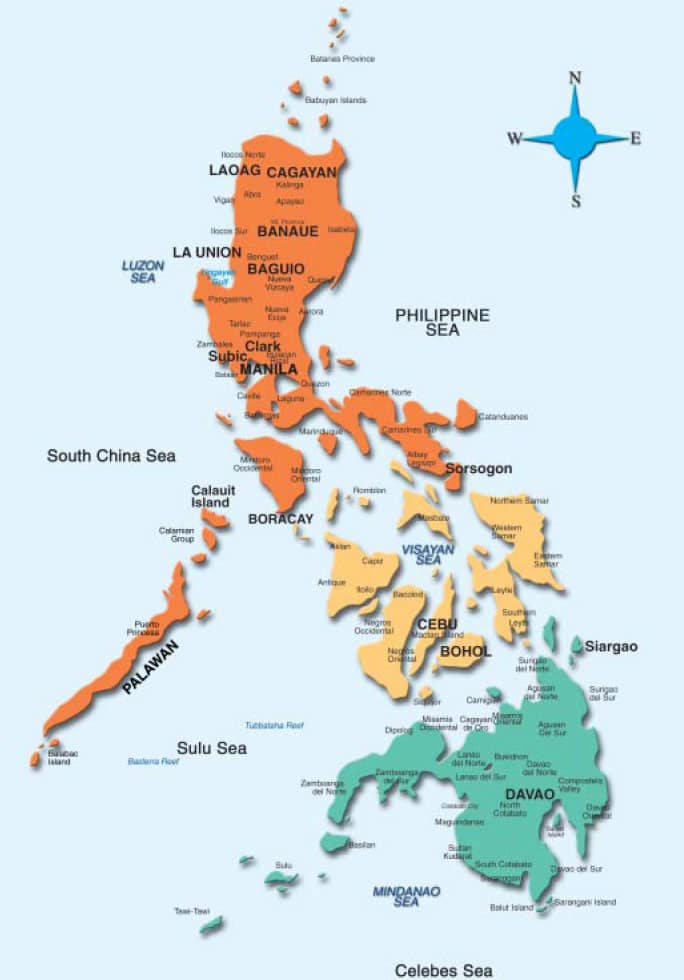
The Philippines is often regarded as a beautiful holiday spot – a perspective that overlooks the local cultural heritage and recent economic growth of the country.
The Economy of the Philippines
The Philippines’ economy has been growing rapidly since the 2000s. In two decades, the country has managed to move from a lower-middle-income nation with a gross national income per capita of under $1,000 in 2000 to $3,549 in 2021.
The service sector has the greatest contribution to the country’s GDP, accounting for over 60% of the GDP as of 2020. Business process outsourcing has played a significant role in the growth of the service sector.
As you can see, the Philippines appears to be on the path of sustainable economic growth, and many factors such as a young, growing workforce that speaks English, high remittances from abroad, and low household debt hint at a promising future ahead.
Many people think that English is the most important language in the Philippines. And while English is one of the official languages in the country, there are many other languages and dialects spoken on its territory.
Indeed, there are up to 187 languages spoken by the people of the Philippines. Each of these languages has its history and origin. Most of the languages spoken are indigenous languages that have survived through the centuries despite Spanish and American rule.
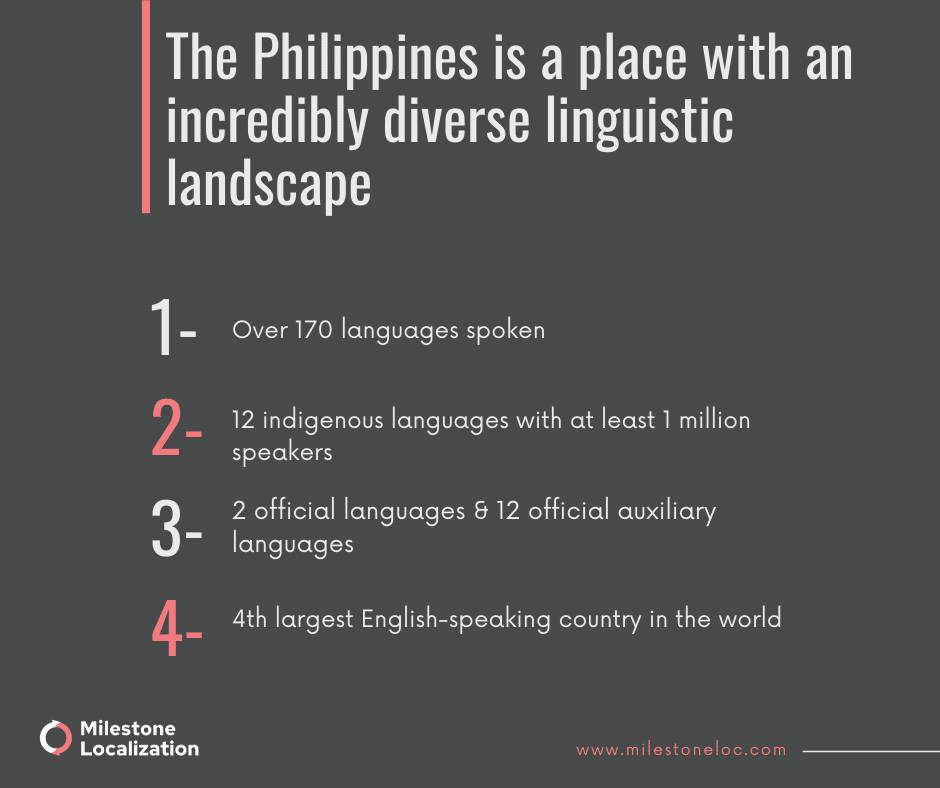
If you want to learn more about the linguistic heritage of this country, keep reading because we will dive deep into the history and use of the languages of the Philippines!
Are You Looking For Translation Services in Philippines?
Milestone helps you seamlessly translate content & localize your website, products, and services for more reach, better conversions, and greater sales.
History of the many languages spoken in the Philippines
There was no common language spoken in the Philippines until the 16th century when Spanish became the official language of the country.
Spanish remained the official language in the Philippines for over 3 centuries after the Spanish colonizers came to the Philippines in 1565.
During the Seven Years’ War in 1762, the British invaded Manila, which was the first time when the Philippine people were confronted with the English language. However, it gained more influence later on, in the period between 1898 and 1946, known as American rule.
In the 1930s, the Commonwealth government decided that the Philippines should have a national language. This affair set the beginning of Philippine language history.
At that time, different languages and dialects were spoken in the territory of the Philippines. In Metro Manila, however, people primarily spoke Tagalog, which is why the language happened to be among the candidates for the country’s official language.
Not many people outside the capital, however, spoke Tagalog. Hence, this proposition was met with a lot of criticism. Eventually, no national language was chosen.
In the 1970s, the debate on a national language reappeared. This time, however, the government focused on creating a national language called Filipino, which would lay the grounds for a new society.
Linguists were assigned the task to modify and enrich the Tagalog language by borrowing words from English, Spanish, Chinese, and Malay. A significant effort was put into replacing unsound Tagalog words with new ones that sounded more melodious.
For instance, the word ‘silya’ stemmed from the Spanish language and was invented to replace the Tagalog word ‘salumpuwit.’
In 1937, the Filipino language was proclaimed the national language of the Philippines. Nine years later, in 1946, it was declared an official language. That same year, the 20-letter Abakada alphabet was introduced and became the standard of the country’s new national language.
Are the languages of the Philippines mutually intelligible?
In the 1990s, R. David Paul Zorc was the first linguist to propose to include all the languages of the Philippines and northern Sulawesi into the so-called group of the Philippine languages. This proposition was later supported by another linguist, Robert Blust.
This grouping is not a coincidence. Indeed, the languages spoken in the Philippines share plenty of similarities in terms of vocabulary. A very suitable example in this regard is the common greeting ‘kumusta ka,’ which is a greeting that people use in several different languages such as Tagalog, Cebuano, and Ilokano.
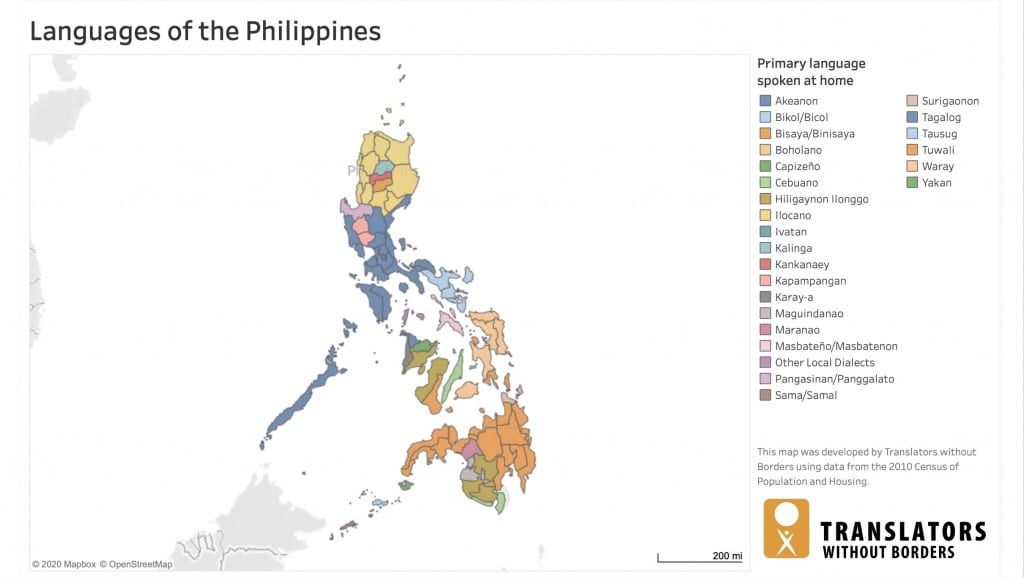
Also read: Languages Spoken In Texas & Its Bilingual Education System
Still, the Philippine languages are not mutually intelligible, at least not all of them. Certainly, there are quite a few related languages that share a lot of similarities (you can have a look at the graph above), and thus, speakers can understand each other. But overall, Philippine languages are quite diverse and different from one another. This, in turn, makes communication between speakers of different languages impossible.
Also Read: Language Vs Dialect Vs Accent: What is the Difference?
What are the official languages of the Philippines?
There are two official languages of the Philippines: English and Filipino.
This means that both English and Filipino are used in more formal settings and official documents, while the native languages are used colloquially as a means of everyday communication between the people.
Filipino and Tagalog
One of the two official languages in the Philippines is Filipino language, which is based on the Tagalog language.
The Filipino language is derived from the Tagalog language, but it also consists of a considerable amount of Spanish, Chinese, and English words. These words were nativized and are now a part of the Filipino language.
The differences between Filipino and Tagalog
The differences between Tagalog and Filipino aren’t as many as one would expect. In fact, Filipino can be viewed as an upgraded, better-sounding version of Tagalog.
There are some contrasts in terms of the alphabet. The Tagalog alphabet consists of 20 letters, while the Filipino alphabet has 28 letters – 20 letters from Tagalog and 8 letters from European languages such as f, c, x, j, and z.
Still, the two languages share the same grammatical structures.
Overall, it is estimated that Filipino and Tagalog share up to 90% of their vocabulary. The remaining 10% of Filipino vocabulary consists of nativized words from English, Spanish, and Chinese. So, if you learn Tagalog, you might as well be able to speak Filipino with ease.
Interestingly, many English words are transliterated in Filipino, meaning that they can be spelled as the local people pronounce them. For instance, ‘computer’ in Filipino is spelled ‘kompyuter’ while ‘driver’ is written like ‘drayber.’
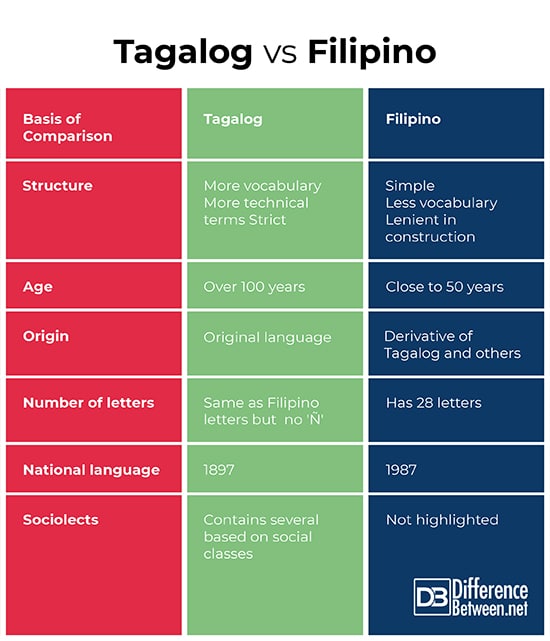
Tagalog is spoken by approximately 82 million Filipinos. There are around 22 million native Tagalog speakers or 20% of the total Philippine population.
Most of its speakers are centered in Manila, but there are Tagalog speakers spread in varying degrees in all parts of the country.
In 2010, the US Census Bureau reported that in the US there were 1.5 million Tagalog speakers, making it the 4th most spoken language at home in the country.
Also Read: The Top Languages Spoken In California
Connect With Philippine Customers In Their Native Languages.
Milestone helps you seamlessly translate content & localize your website, products, and services for more reach, better conversions, and greater sales. Get in touch with us for a special discount.
How Widely Is English Spoken in the Philippines?
Interestingly, the Republic of the Philippines has the fourth-highest population of English speakers in the world!
Over 90 million (which equals 88% of the population) Filipinos speak English as a second language.

Due to the high number of English speakers in the country, the Philippines has become a big outsourcing and IT services hub, especially for the US. Indeed, the service sector, in which business process outsourcing (BPO) is the most important segment, accounts for 60% of the country’s GDP.
Besides the high proficiency in spoken English, there are other benefits such as less expensive operational and labor costs and a highly educated labor pool that attract foreign investors, which in turn contribute to the growth of the BPO sector.
Due to the accelerated digitization of government, industry, and society, there is more opportunity for the rapid growth of the IT sector, especially for a country like the Philippines with a 90% mobile penetration.
English is one of the two official languages of the country.
This means that English is used in official documents of the government, the legal system, business, the sciences, and medicine, and as a medium of instruction at schools and by the media.
Typically, native languages are used colloquially, while English is used in more formal situations.
English is losing its influence, despite its official status. For example, in 2007, three Malolos City regional trial courts in Bulacan decided to replace English with Filipino to promote the use of the national language in more formal contexts.
Tagalog is often used as the language of instruction at schools, although the books are written in English.
English has left its mark on most native languages in the Philippines, but probably the most significant influence that English has had is on Taglish.
What is Taglish?
Taglish is an unofficial melding of English and Tagalog, which is spoken not only in the Philippines but in any region where huge Filipino populations are located (e.g., the US).
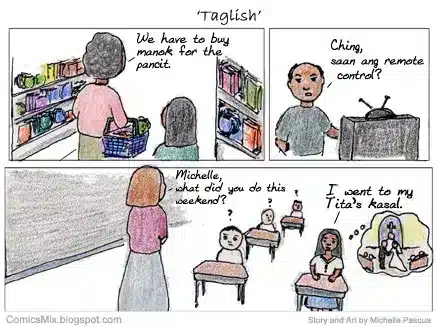
While Taglish is spoken throughout the country, it is mainly used in the capital city of Manila.
Over the years, Taglish has become very widespread in the country and is typically viewed as the de facto lingua franca (meaning a common language for communication between speakers of different native languages) among the urbanized and educated middle class.
It is considered an acceptable conversation style of speaking or writing in informal settings.
Also Read: What are the fastest-growing languages?
What are the indigenous languages spoken in the Philippines?
The Philippines government has officially recognized only 8 regional languages, but there are overall 12 languages with over 1 million speakers.
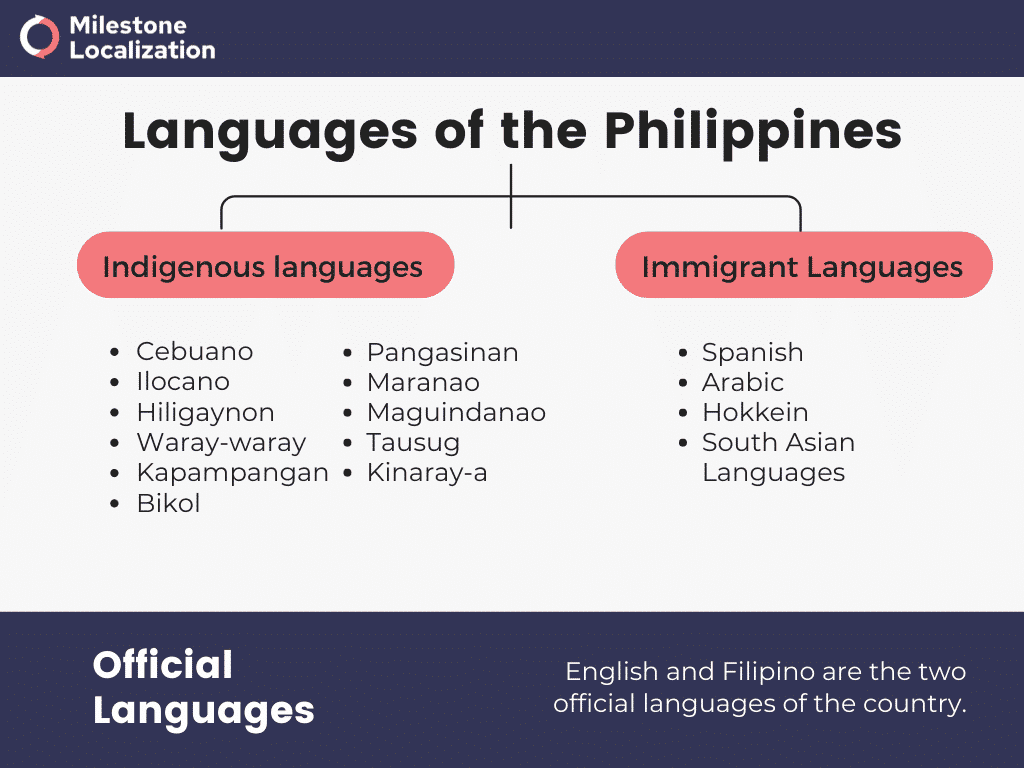
Cebuano
The Cebuano language, also referred to as Binisaya (or Visayan in English), is widely spoken on Cebu Island as well as in the central and southern parts of the Philippines.
There are 27.5 million native Cebuano speakers in the country.
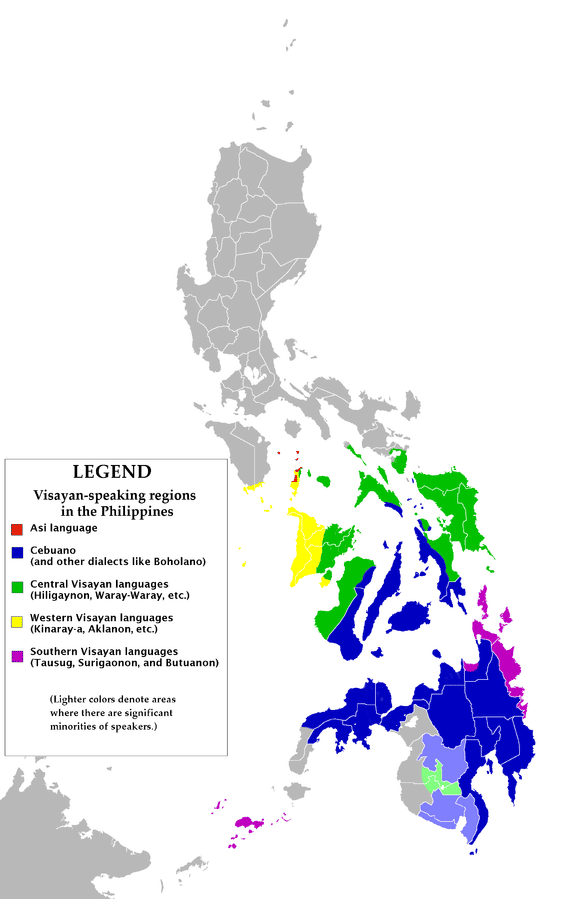
Cebuano is an Austronesian language that stems from Cebu Island. This is the language with most native speakers in the Philippines, despite it not being taught at schools and universities.
Ilocano
The Ilokano or Ilocano language is the third most-spoken language in the country and is an Austronesian language. It is closely related to Indonesian, Malay, Hawaiian, Fijian, Maori, Malagasy, Samoan, Tahitian, Chamorro, Tetum, and Paiwan.
Ilocano speakers are mainly situated in northwest Luzon, the Babuyan Islands, Cordillera Administrative Region, Cagayan Valley, northern parts of Central Luzon, Mindoro, and scattered areas in Mindanao (the Soccsksargen region in particular).
Ilocano is used as a medium of instruction until the second grade in the country. The Ilokano people had their indigenous script called kur-itan.
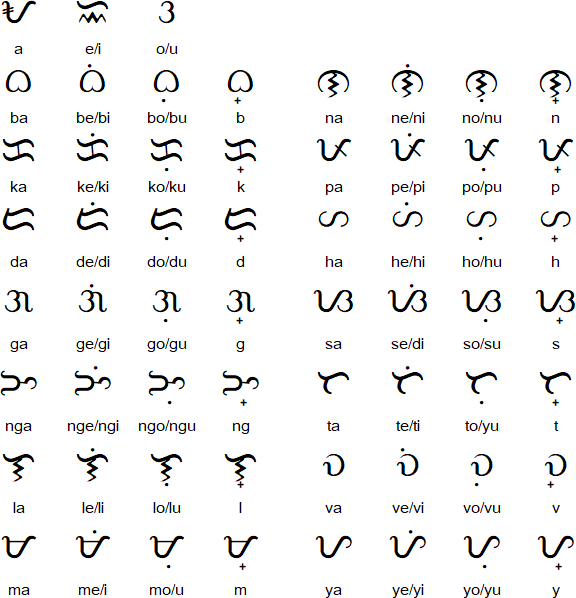
The Ilocano language is the language of mythology and folklore. Thus, the language reflects many traditional values of the Ilocano people, such as loyalty, courage, pragmatism, family, respect, and honor.
Overall, there are 8.1 million Ilocano speakers and 2 million L2 speakers in the country.
Hiligaynon
Hiligaynon, also known as Ilonggo, is an Austronesian language widely spoken in the Western part of the Philippines. There are approximately 9.3 million Hiligaynon speakers.
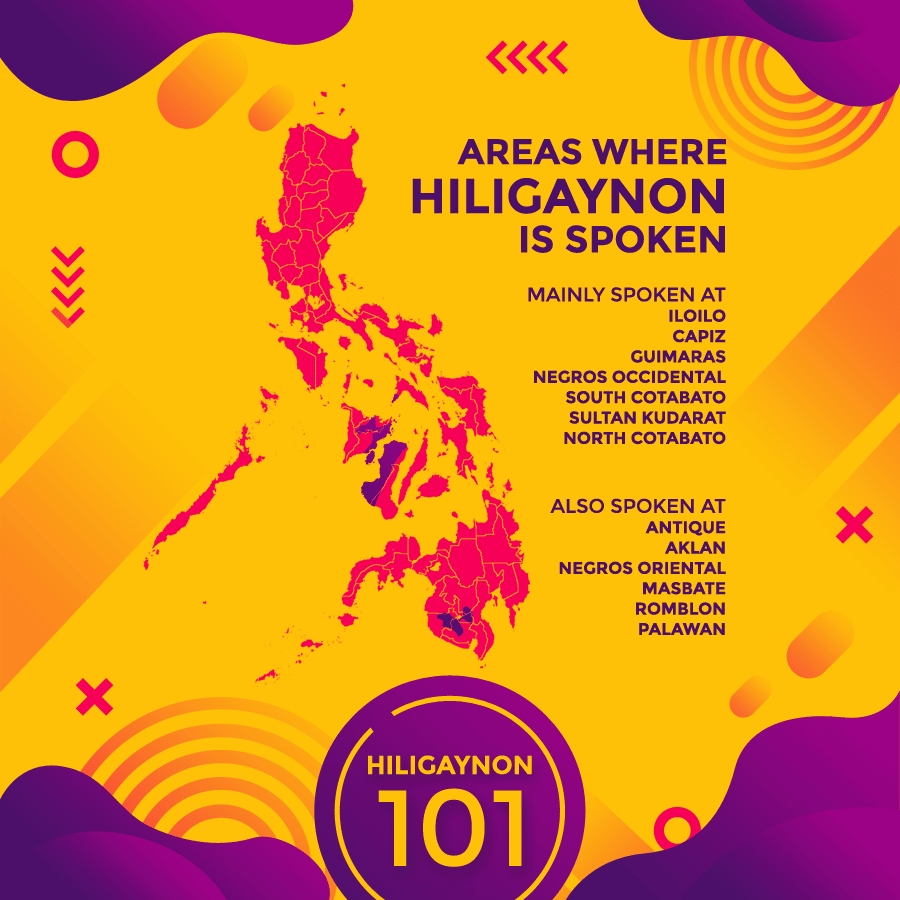
Its speakers are concentrated in the provinces of Iloilo, Negros Occidental, and Capiz, in the provinces of the Panay Island group, as well as in many parts of Mindanao.
Waray-waray
The name “Waray-waray” comes from a commonly used word, meaning “none,” “nothing,” or “not.” Another name for the Waray-waray language is Winaray or Lineyte-Samarnon.
This language is spoken by the Waray people in the provinces of Samar, Northern Samar, Eastern Samar, and in some parts of the Leyte and Biliran.
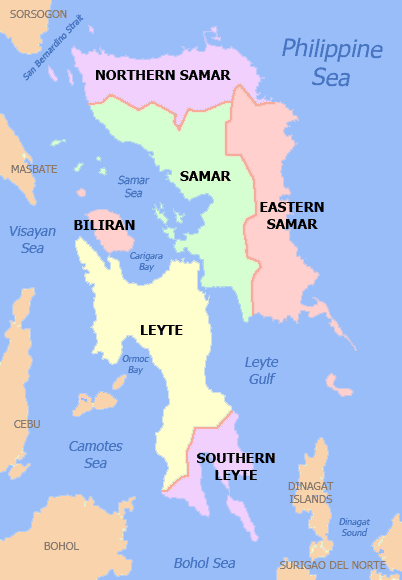
It belongs to the Visayan language family and is related to Cebuano and Hiligaynon.
Different Waray-waray dialects are spoken in parts of Masbate, on the island of Ticao, which is adjacent to Samar Island.
There are 3.6 million Waray speakers in the country.
Kapampangan
Kapampangan is an Austronesian language that is primarily spoken in the province of Pampanga, southern Tarlac, in parts of Kapampangan, in northeastern Bataan, as well as in the municipalities of Bulacan, Nueva Ecija, and Zambales. Also spoken by a few Aeta groups in the southern part of Central Luzon as well.
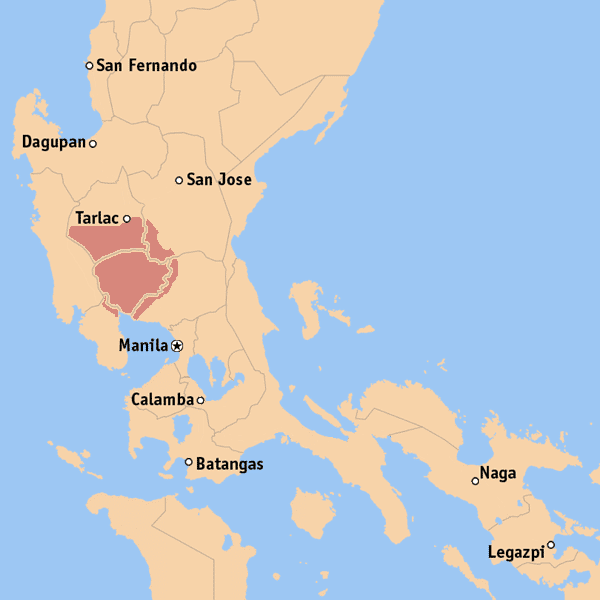
There are around 2 million Kapampangan speakers in the Philippines.
During the Spanish colonial period, several Kapampangan grammar books and dictionaries were written. Some of the most prominent are Diego Bergaño’s “Arte de la lengua Pampanga” and “Vocabulario de la lengua Pampanga”.
Bikol
The Bikol language refers to a group of Central Philippine languages primarily spoken on the Bikol Peninsula of the island of Luzon, parts of Catanduanes and Burias Islands, and in parts of the Masbate Province.
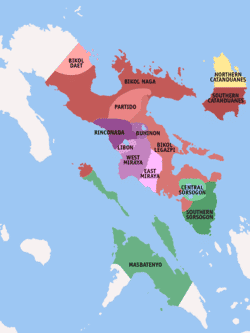
Bikol languages are part of the Central Philippine language family, to which Tagalog and the Visayan languages also belong. The four main dialect groups are Northern Bikol, Southern Bikol, Northern Catanduanes, and Bisakol.
There are 2.5 million Bikol speakers in the Philippines.
Pangasinan
The Pangasinan language, also called Pangasinese, belongs to the Malayo-Polynesian branch of the Austronesian language family.
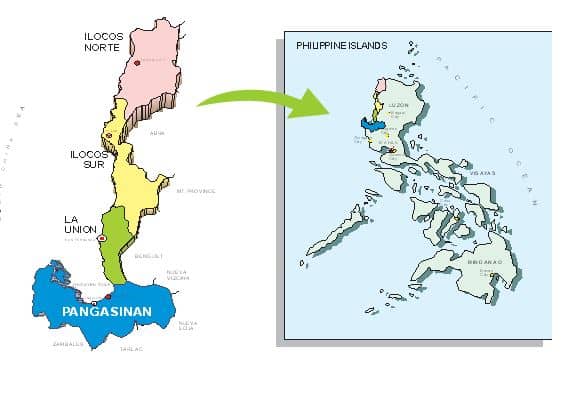
The language is spoken mainly in the province of Pangasinan by over 1 million people. Pangasinese is very similar to Ilocano and Tagalog and is closely related to the Ibaloi language, spoken in regions north of Pangasinan.
Maranao
Maranao refers to an Austronesian language spoken by the people of Lanao (Lanao is a predominantly Muslim region on the island of Mindanao) as well as the Maranao people in the provinces of Lanao del Norte and Lanao del Sur. There are less than 800,000 speakers.
Maguindanao
Maguindanao is an Austronesian language spoken by the majority of the population of the Maguindanao province in the Philippines. There are around 1.1 speakers in the country.
It is also used in different parts of Mindanao, such as the cities of Zamboanga, Davao, and General Santos, and the provinces of North Cotabato, Sultan Kudarat, South Cotabato, Sarangani, Zamboanga del Sur, Zamboanga Sibugay, and Metro Manila.
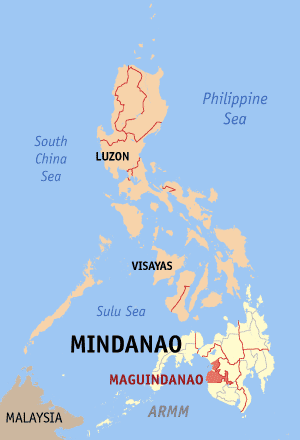
Its speakers are estimated to be around 1 million people.
Tausug
Tausug is a language widely spoken in the Sulu Province as well as in Malaysia and Indonesia by the Tausug people. In the Philippines, there are around 1 million speakers.
The name of the language means “a person of Sulu” – “tau” is colloquially used to refer to a person, while “sug” stands for Sulu.
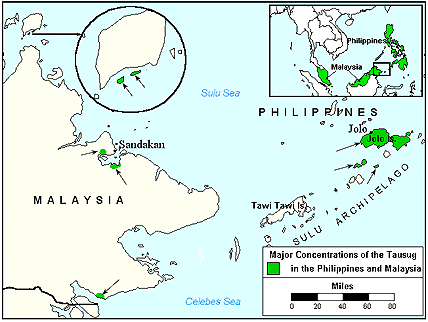
Tausug is very closely related to the Butuanon language, spoken in northeastern Mindanao.
Kinaray-a
Kinaray-a is an Austronesian language and is spoken mainly in the Antique Province in the Philippines, in Iloilo province, the south of Capiz province, and certain villages in Mindanao by less than half a million people.
Kinaray-a stems from the word “iraya,” whose equivalent in Tagalog is “ilaya,” which refers to a group of people living in the mountain areas of the province.
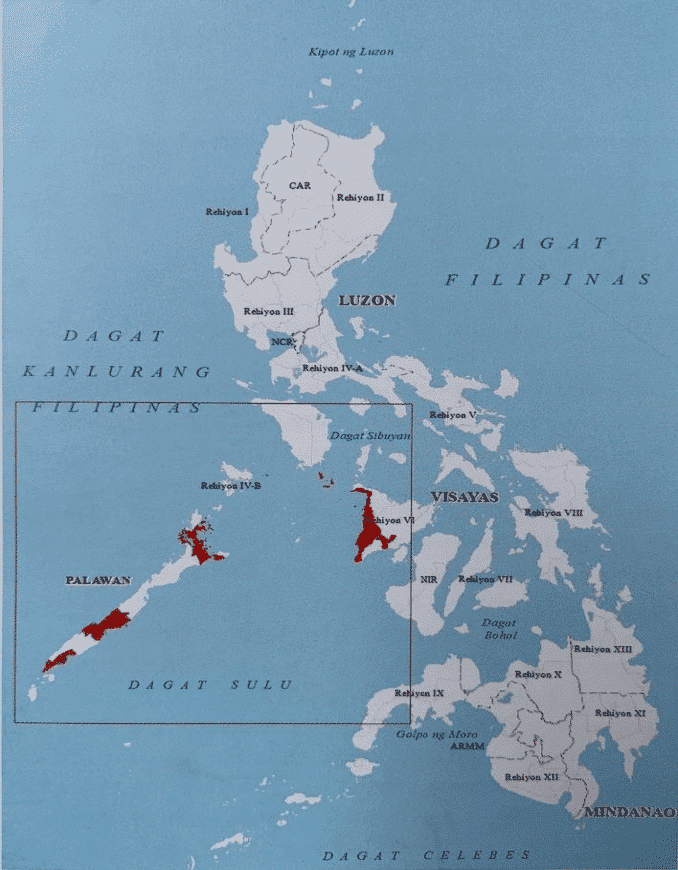
Also read: Must Know Things About Korean Business Etiquette & Culture
Kinaray-a and Hiligaynon are often mistaken for dialects due to their high degree of mutual intelligibility. These are separate languages that belong to related subgroups.
Generally, Kinaray-a is mainly spoken in most towns, while Hiligaynon is spoken primarily in Iloilo City.
Major immigrant languages in the Philippines
Immigrant languages also have a considerable contribution to the overall linguistic landscape of the Philippines. Here are some of the more popular immigrant languages in the country:
Spanish
Spanish came to the Philippines during the 16th century when the Spanish conquistador Miguel López de Legazpi arrived in Cebu. Today, Spanish is not so widely spoken, yet its huge influence in the past is still visible in the many existing Spanish words in most local languages.
According to statistics, around 1 million people can speak Spanish with varying degrees of fluency, while less than 440,000 people speak Spanish as a native language. It is the most popular foreign language that students at schools choose to learn, followed by French and German.
Also read: The Prevalence Of Spanish Langauge Within The US
Arabic
Arabic is widely used by Filipino Muslims since the 14th century, when Islam arrived in the Philippines. What’s more, Arabic was used by merchants in the Malay Archipelago.
Today, around 2.2 million people in the Philippines claim to have at least a partial Arab ancestry. However, there is no data on how many people can speak Arabic.
Arabic is an optional subject at schools in the Philippines and is taught for free at Islamic schools and other institutions.
Overall, Arabic is used for educational purposes and in religious activities too. It is rarely used at official events or in daily conversations.
Also Read: 10 Reasons Why Arabic is an Incredibly Interesting Language
Hokkien
Hokkien Chinese is the heritage language of Chinese immigrants in the Philippines, that has come from Southern Fujian (pronounced locally as Hokkien) province in China. Most Chinese Filipinos, especially those living in the Philippines for generations, speak Filipino or English at home. Still, Hokkien is used among family members on some occasions.
According to statistics, only 12% of all ethnic Chinese, living in the Philippines, speak a variety of Chinese as their mother tongue. Still, the vast majority (around 77%) can speak Hokkien as a second or third language.
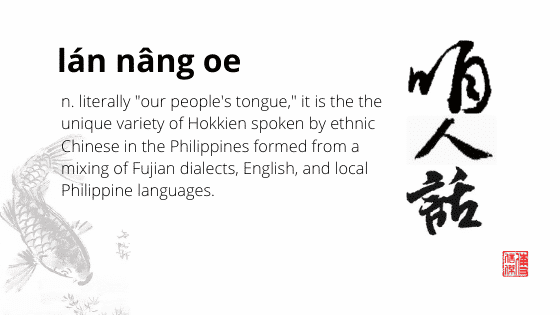
Similar to Spanish, there are quite a few words in the local languages borrowed from Chinese, and they usually refer to household objects and cuisine.
Other Chinese dialects spoken in the Philippines include Yue Chinese (Taishanese and Cantonese, in particular), Hakka, and Teochew.
South Asian languages
Small Indian communities have inhabited the Philippines since pre-Spanish times. Thus, Hindi, Punjabi, and Urdu (spoken by the Pakistani community) are among the most widely spoken South Asian languages.
Recently, many Tamil, Nepali, and Marathi speakers have immigrated to the Philippines.
Other Asian languages that can be heard in the Philippines include Malay, Vietnamese, and Korean.
Also Read: Most Spoken Languages of South Asia
Multilingualism in the Philippines
In the Philippines, there is a trend of trilingualism, with many young people being fluent in English, Tagalog, and other native languages in their region.
The older generations primarily speak Tagalog or some other native language from their region, so multilingualism is a rather recent trend that can be observed among the younger generations in the Philippines.
In conclusion
The Philippines is a place with an incredibly diverse linguistic heritage. While the country is the fourth-largest English-speaking country in the world, one should not underestimate how widely the indigenous languages are spoken in the country.
What’s more, the influence of English is slowly diminishing since the government is investing considerable efforts in promoting the native Philippine languages. As a result, a new trend of multilingualism is occurring among the younger generations.
REACH FILIPINO CUSTOMERS IN THEIR NATIVE LANGUAGE
Milestone helps you seamlessly localize your website, products, and services into Filipino languages for more reach, better conversions, and greater sales.

